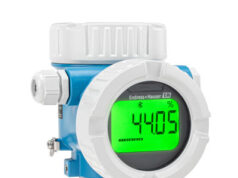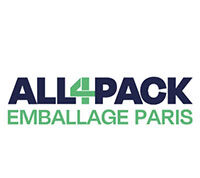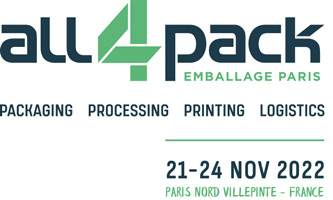 L’evoluzione dei materiali per imballaggi dal punto di vista degli operatori
L’evoluzione dei materiali per imballaggi dal punto di vista degli operatori
Salone internazionale precursore per tutte le soluzioni di packaging sostenibile e dell’intralogistica, ALL4PACK vuole essere una fonte d’ispirazione per supportare tutti gli attori del settore di fronte alle sfide presenti e future. In questa prospettiva, il salone si contraddistingue decodificando le evoluzioni del mercato e le normative, ed evidenziando le innovazioni più responsabili. Per essere al centro delle riflessioni del settore, ALL4PACK Emballage Paris ha intervistato* prima dell’edizione 2022 (21-24 novembre, Paris Nord Villepinte) la community della fiera (fornitori di packaging e industrie utilizzatrici) per conoscere la loro visione sull’evoluzione dei materiali per imballaggio.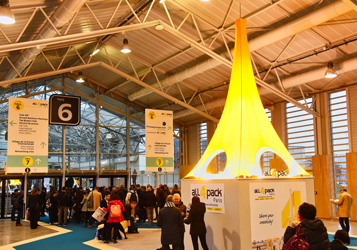
La sfida per un imballaggio più rispettoso dell’ambiente
La rivoluzione degli imballaggi è in corso
- L’intera community di ALL4PACK è consapevole della necessità di una transizione ecologica: l’88% ritiene che l’uso di imballaggi più rispettosi dell’ambiente sia una questione prioritaria.
- Le ragioni principali di questa transizione sono le aspettative dei consumatori (69%), i vantaggi in termini di immagine (56%) e i cambiamenti legislativi (49%).
- Al contrario gli elementi più difficili da superare riguardano il costo dell’utilizzo di materiali di imballaggio rispettosi dell’ambiente (63%), la disponibilità (43%) e la qualità dei materiali (37%), le barriere sono percepite maggiormente dalle industrie utilizzatrici (43%) rispetto ai fornitori (27%).
I tipi di materiali utilizzati
Il futuro brillante dei biomateriali
- La carta/cartone (77%) e la plastica (73%) restano i principali materiali utilizzati per gli imballaggi. I biomateriali sono ancora poco utilizzati (18%)
Tuttavia, alla domanda sulla natura dei materiali utilizzati nei prossimi due anni, la community di ALL4PACK sembra avere una visione precisa (solo lo 0,5% degli intervistati risponde “non sa “):
- L’uso dei biomateriali è destinato ad esplodere: il 37% degli intervistati afferma di voler iniziare ad utilizzare i biomateriali nei prossimi due anni.
- Anche carta e cartone dovrebbero avere il vento in poppa: il 46% dei decisions maker intervistati afferma di volerne utilizzare di più.
- Dovrebbe verificarsi un vero e proprio calo nell’uso della plastica: il 32% prevede di ridurre l’utilizzo di questa risorsa; tuttavia, pochi intendono smettere di utilizzarla (5%). L’uso di metallo, vetro e legno dovrebbe rimanere relativamente stabile.
Fornitori d’imballaggio / industrie utilizzatrici
La visione condivisa dei membri della community ALL4PACK
Le sfide degli imballaggi più rispettosi
- Le industrie utilizzatrici sono quasi unanimi sull’importanza di utilizzare materiali d’imballaggio più rispettosi dell’ambiente: l’88% ritiene che la questione sia una priorità.
Oltre il 50% dei fornitori di imballaggi ritiene che sia una priorità assoluta utilizzare materiali più rispettosi dell’ambiente. I fornitori francesi sembrano essere in anticipo (il 100% considera la questione piuttosto o completamente prioritaria).
Le motivazioni
- Per le industrie utilizzatrici, le aspettative dei consumatori (68%) sono la ragione principale che porta all’uso di materiali di imballaggio più rispettosi dell’ambiente, in particolare nell’industria agroalimentare (83%). Seguono i vantaggi in termini di immagine (59%), di cambiamenti normativi (43%) e la volontà dei manager (35%), soprattutto nelle grandi aziende.
- Per i fornitori, le stesse prime tre ma con risultati diversi: con il 71%, le aspettative dei consumatori sono il motivo principale che porta all’uso di materiali di imballaggio più rispettosi dell’ambiente. Al secondo posto (57%) seguono i cambiamenti legislativi, seguiti dai benefici in termini di immagine (55%). Molti francesi considerano prioritario il tema degli imballaggi più rispettosi dell’ambiente (media del 74% sui primi tre).
Gli ostacoli
- Per le industrie utilizzatrici, il principale ostacolo all’uso di materiali di imballaggio più rispettosi dell’ambiente è chiaramente il costo (66%), in particolare in Francia (71%). In misura minore, anche la disponibilità (43%) e la qualità dei materiali (43%) rappresentano dei temi problematici per molte aziende.
- Per i fornitori, se il costo dei materiali è anch’esso l’ostacolo principale all’utilizzo di materiali di imballaggio più rispettosi dell’ambiente (57%), seguito dalla disponibilità dei materiali (41%), l’importo dell’investimento necessario per l’utilizzo di tali materiali è il terzo ostacolo (29%), soprattutto per le aziende con 50 dipendenti o più (40,5%).
I materiali utilizzati
- Per le industrie utilizzatrici, i biomateriali sono attualmente ancora relativamente poco utilizzati (14,8%). La carta/cartone (86%) e la plastica (75,8%) rimangono la norma. Il vetro è attualmente utilizzato principalmente nell’industria alimentare (34,7%).
- Per i fornitori, il numero di produttori di imballaggi in biomateriali è ancora piuttosto basso (22,9%) rispetto ai fornitori di imballaggi in plastica (69,9%) e cartone (62,7%).
I materiali del futuro
- Entro 2 anni, molte industrie utilizzatrici intendono ridurre l’uso della plastica (34%) ma il materiale non scomparirà: il 74% intende ancora utilizzarla. Allo stesso tempo l’utilizzo dei biomateriali dovrebbe registrare una forte crescita (+39% intende iniziare ad utilizzarli) e dovrebbe aumentare anche quello della carta cartone (il 48% intende utilizzarne di più). Ad eccezione della plastica, tutti i materiali di imballaggio sono in aumento nell’industria
- Un numero significativo di utilizzatori di imballaggi prevede di ridurre l’uso della plastica (28%) ma pochi smetteranno di utilizzarla (3,6%). L’uso dei biomateriali dovrebbe essere ampiamente democratizzato (56,6%) e l’uso della carta cartone aumenterà (66,3%). Le evoluzioni secondo i mercati di riferimento dovrebbero essere simili, anche se l’offerta di biomateriali dovrebbe aumentare ulteriormente sul mercato agroalimentare il 64% intende utilizzare questo materiale tra due anni (contro il 24% che attualmente lo utilizza).
Il sondaggio completo è disponibile sul sito Internet www.ALL4PACK.com
*Sondaggio condotto da ALL4PACK Emballage Paris tra l’11 aprile e il 10 maggio 2022, tra 211 decision maker appartenenti ai settori delle industrie utilizzatrici (60%) e dei fornitori di imballaggi (40%) di tutti i settori, di tutte le dimensioni e di diversi Paesi
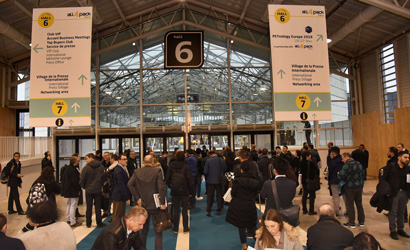 ALL4PACK Emballage Paris survey
ALL4PACK Emballage Paris survey
The future of packaging materials, as seen by professionals
As the international tradeshow pioneering all the sustainable packaging and intralogistics solutions, ALL4PACK Emballage Paris is a source of inspiration to support the sector’s players in the face of current and future challenges. In this perspective, the tradeshow stands out by deciphering market developments and regulations, also highlighting the most responsible innovations. In a move to remain close to the concerns of the sector, ALL4PACK Emballage Paris conducted a survey* ahead of its 2022 show (21-24 November, Paris Nord Villepinte) among the exhibition’s community (packaging suppliers and user industries) to gauge its vision of the future of packaging materials.
The issue of more environmentally friendly packaging
The packaging revolution is underway
- Everyone in the ALL4PACK Emballage Paris community is aware of the need for a green transition: 88% consider it to be a priority to use more environmentally friendly packaging.
- The main reasons driving this transition are consumer expectations (69%), benefits in terms of brand image (56%) and changes in legislation (49%).
- Conversely, the obstacles expressed are, unsurprisingly, the cost of use of environmentally friendly materials (63%) followed further behind by the availability (43%) and the quality of materials (37%), obstacles more prevalent among user industries (43%) than among suppliers (27%).
Types of materials used
Diversity enhanced by the emergence of new materials:
Paper-cardboard (77%) and plastic (73%) remain the main materials used for packaging. Biomaterials are as yet little used (18%).
Nevertheless, when asked about the type of materials used in the coming two years, the ALL4PACK community appears to have a clear vision (only 0.5% of those surveyed responded “Don’t know”).
- The use of biomaterials should increase: 37% of respondents said that they wanted to start using biomaterials in the coming two years.
- Paper and cardboard should also rise significantly: 46% of decision-makers declare they wanted to use more of it.
- A real decline in the use of plastic is expected to occur: 32% are intending to reduce their use of this resource, nonetheless, few plan to stop using it altogether (5%). The use of metal, glass and wood should remain relatively unchanged.
Packaging suppliers/user industries
The shared vision of the members of the ALL4PACK community
The issue of more responsible packaging
- User industries are virtually unanimous on the importance of using more environmentally friendly packaging materials: 88% of them see this issue as a priority.
- More than 50% of packaging suppliers believe that it is a major priority to use more environmentally friendly materials. French suppliers appear to be leading the way on the subject (100% see this issue as either a priority among others or a major priority).
Explanations and motives
- For user industries, consumer expectations (69%) are the primary reason leading to the use of more environmentally friendly materials, in particular in the food industry (83%). The benefits in terms of image (56%), regulatory changes (49%) and senior management wishes (35%) are the next most-cited reasons, in particular in large companies.
- On the supply side, the same three reasons top the podium, but with different results: at 71%, consumer expectations are the leading reason to adopt more environmentally friendly packaging materials.
Regulatory and legal changes arrive in second place (57%), followed by benefits in terms of image (55%). A great many French respondents consider that the issue of more environmentally friendly packaging material is a priority (average of 74% on the three first items).
Obstacles
- For user industries, the main obstacles to using more environmentally friendly packaging materials is clearly cost (66%), in particular in France (71%). To a lesser extent, availability (43%) and quality of materials (43%) also appear problematic for many companies.
- For suppliers, while the cost of materials is also the main obstacle to using more environmentally friendly packaging materials (57%), followed by the availability of materials (41%), the investment required to use these materials is the third most cited obstacle (29%), in particular for companies with 50 employees or more (40.5%).
Materials used
- For user industries, biomaterials are currently relatively little-used (14.8%). Paper/cardboard (86%) and plastic (75.8%) remain the norm. Glass is today particularly used in the food industry (34.7%).
- On the supply side, there is a still quite low number of producers of packaging made from biomaterials (22.9%), compared with suppliers of plastic packaging (69.9%) and paper/cardboard packaging (62.7%).
Materials of the future
- In the next two years, many user industries expect to reduce the use of plastic (34%) but the material is still unlikely to disappear: 74% of them still expect to use it. The use of biomaterials should in parallel see a strong increase (39% expect to start using them), and that of paper-cardboard should also rise (48% expect to use more). With the exception of plastic, all packaging materials are on the increase in the food sector.
- Among the survey respondents, the number of producers of packaging made from biomaterials is still quite low compared with suppliers of plastic and paper-cardboard packaging. A large number of packaging users expect to reduce their use of plastic (28%) but few will stop using it altogether (3.6%). The use of biomaterials should logically increase (56.6%,), just like the use of paper-cardboard should increase (66.3%) to meet the expectations of user industries. The supply of biomaterials should increase more in the food market, with 64% expecting to use this material in the coming two years (compared with 24% who use it currently).
The full findings of the survey can be found on the website www.ALL4PACK.com
*Survey conducted by ALL4PACK Emballage Paris between 11 April and 10 May 2022, among 211 decision makers belonging to the sectors of user industries (60%) and packaging suppliers (40%) across all categories, of all sizes and from different countries.



